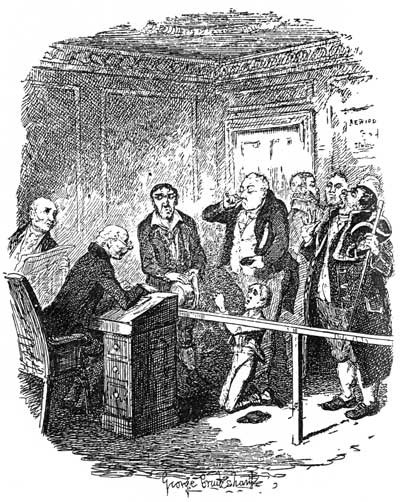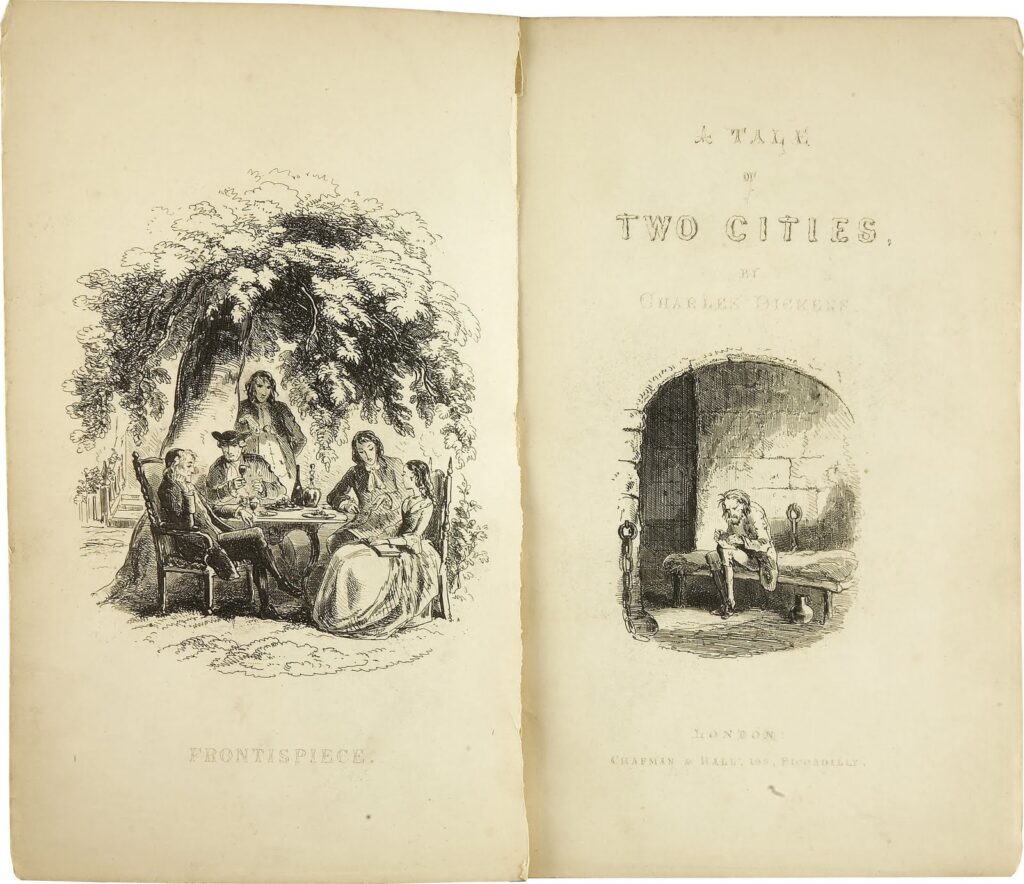
Charles Dickens was one of the greatest Enlighs writers and social critics. Many of his works are an insight into the world of the British Industrial Revolution.
Below is an excerpt from a biography of Charles Dickens included with our books.
| Title | Published |
|---|---|
| A Tale of Two Cities | 1859 |
| Hard Times | 1854 |
The birth date of Dickens’s birth was recorded on 7 February 1812 at Landport in Portsea, England.
Very soon after Dickens’ birth the family moved to Norfolk Street, Bloomsbury. When Dickens was four, they moved to Chatham, Kent, where he spent his formative years until the age of 11. His early years seem to have been idyllic.
Charles spent time outdoors, but also read voraciously, especially the picaresque novels of Tobias Smollett and Henry Fielding. His father’s brief period as a clerk in the Navy Pay Office gave him a few years of private education.
Dickens left school to work in a factory after his father was in debtors’ prison. His father was imprisoned in the Marshalsea debtors’ prison in Southwark London in 1824. Shortly afterwards, his wife and the youngest children joined him there. Charles, then 12 years old, was boarded with Elizabeth Roylance, a family friend, in Camden Town.


After a few months in Marshalsea, John Dickens’s paternal grandmother, Elizabeth Dickens, died and bequeathed Dickens’s father the sum of £450. On the expectation of this legacy, Dickens’s father, John Dickens’s, was granted release from prison.
Although Charles eventually attended the Wellington House Academy in North London, his mother Elizabeth Dickens did not immediately remove him from the boot-blacking factory. Charles Dickens had little formal education beyond high school.
In 1832, at age 20, Dickens lacked a clear sense of what he wanted to become, yet knew he wanted to be famous. He became a political journalist, reporting on parliamentary debate and travelling across Britain to cover election campaigns for the Morning Chronicle. Dickens’s journalism, in the form of sketches in periodicals, formed his first collection of pieces Sketches by Boz published in 1836.
In November 1836 Dickens accepted the job of editor of Bentley’s Miscellany, a position he held for three years, until he fell out with the owner. In 1836 he began writing the beginning instalments of Oliver Twist while continuing work on Bentley’s. Oliver Twist, published in 1838, became one of Dickens’s better known stories.
On 2 April 1836, he married Catherine Thomson Hogarth (1816–1879), the daughter of George Hogarth, editor of the Evening Chronicle.
After a brief honeymoon in Chalk, Kent, they set up home in Bloomsbury at 48 Doughty Street, London from 25 March 1837 until December 1839.


In 1842, Dickens and his wife made their first trip to the United States and Canada. He described his impressions in a travelogue, American Notes for General Circulation. Dickens included in Notes a powerful condemnation of slavery. During his visit, Dickens spent a month in New York City, giving lectures and raising the question of international copyright laws and the pirating of his work in America. He persuaded twenty five writers, headed by Washington Irving to sign a petition for him to take to congress, but the press were generally hostile to this saying that he should be grateful for his popularity and that it was mercenary to complain about his work being pirated.
Soon after his return to England, Dickens began work on the first of his Christmas stories, A Christmas Carol, written in 1843 as one of his most popular books.
After living briefly in Italy (1844) Dickens travelled to Switzerland (1846); it was in Switzerland where he began work on Dombey and Son (1846–48). This and David Copperfield (1849–50) mark a significant artistic break in Dickens’s career as his novels became more serious in theme and more carefully planned than his early works.
In late November 1851, Dickens moved into Tavistock House where he wrote Bleak House (1852–53), Hard Times (1854) and Little Dorrit (1857).
In 1856, his income from writing allowed him to buy Gad’s Hill Place in Higham, Kent. As a child, Dickens had walked past the house and dreamed of living in it. The area was also the scene of some of the events of Shakespeare’s Henry IV, Part 1 and this literary connection pleased him.
Major works, A Tale of Two Cities (1859); and Great Expectations (1861) soon followed and were very successes.




On 9 June 1865, while returning from Paris, Dickens was involved in the Staplehurst rail crash. Although physically unharmed, Dickens never really recovered from the trauma of the Staplehurst crash.
On 9 November 1867, Dickens sailed from Liverpool for his second American reading tour. During his travels, he saw a significant change in the people and the circumstances of America. On 23 April, he boarded his ship to return to Britain.
On 8 June 1870, Dickens suffered another stroke at his home and never regained consciousness. On 9 June 1870, he died at Gad’s Hill Place. Charles Dickens was laid to rest in the Poets’ Corner of Westminster Abbey.